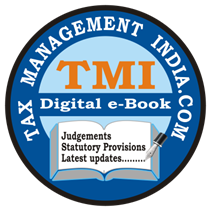Case Laws
Acts
Notifications
Circulars
Classification
Forms
Manuals
Articles
News
D. Forum
Highlights
Notes
🚨 Important Update for Our Users
We are transitioning to our new and improved portal - www.taxtmi.com - for a better experience.
⚠️ This portal will be fully migrated on 31-July-2025 at 23:59:59
After this date, all services will be available exclusively on our new platform.
If you encounter any issues or problems while using the new portal,
please let us know
via our feedback form
, with specific details, so we can address them promptly.
|
Home
Issues Involved:
1. Deduction of Government subsidy from the cost of assets for depreciation and investment allowance. 2. Deletion of foreign tour expenses. 3. Exclusion of LTC, HRA, P.F. contribution, and medical reimbursement expenses from perquisites. Detailed Analysis: 1. Deduction of Government Subsidy from the Cost of Assets for Depreciation and Investment Allowance: The revenue contended that the CIT (A) erred in directing the IAC (A) not to deduct the subsidy received from the Government from the cost of assets for the purpose of depreciation and investment allowance. The Departmental Representative argued that the subsidy was allocated to different assets, indicating it was meant to meet the cost of assets. The assessee's counsel cited various High Court judgments supporting that central subsidy should not be deducted for computing the cost/WDV of assets for depreciation and investment allowance. The Tribunal examined these judgments and noted that various Benches of the Tribunal and High Courts, except Punjab & Haryana High Court, consistently held that such subsidies are for growth and expansion in backward areas and should not be deducted from the cost of assets. The Tribunal confirmed the CIT (A)'s findings and rejected ground No. 1 of the revenue's appeal. 2. Deletion of Foreign Tour Expenses: The revenue challenged the deletion of Rs. 1,59,129 in foreign tour expenses by the CIT (A), arguing that additional evidence was entertained without giving the assessing authority an opportunity to examine it. The expenses included partial disallowance of 50% for the Director's expenses and complete disallowance for his wife's expenses. The assessee's counsel argued that the revenue did not raise a specific ground against the additional evidence in the appeal and provided a detailed account of the foreign tour expenses. The counsel also highlighted that the expenses were submitted to the assessing authority, who did not raise further queries or suspicions. The Tribunal examined the submissions and documents, noting that the assessing authority was aware of the honorary appointment of Smt. Somani and the expenses were for business purposes. The Tribunal found that the CIT (A) was justified in entertaining the additional evidence and that the expenses were rightly allowed as they were for business purposes. The Tribunal confirmed the deletion of the disallowance of foreign tour expenses and rejected ground No. 2 of the revenue's appeal. 3. Exclusion of LTC, HRA, P.F. Contribution, and Medical Reimbursement Expenses from Perquisites: The revenue acknowledged that a similar issue had been decided against the department in a previous case, and the department had filed a reference application to keep the matter alive. The CIT (A) had excluded medical reimbursement expenses, LTC, HRA, and P.F. contribution from perquisites for section 40A(5) calculations, reducing the disallowance to Rs. 15,646. The Tribunal agreed with the CIT (A)'s conclusions and confirmed the order, rejecting ground No. 3 of the revenue's appeal. Conclusion: The appeal was dismissed, with the Tribunal confirming the CIT (A)'s decisions on all three grounds.
|
 9911796707
9911796707
